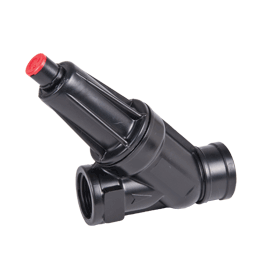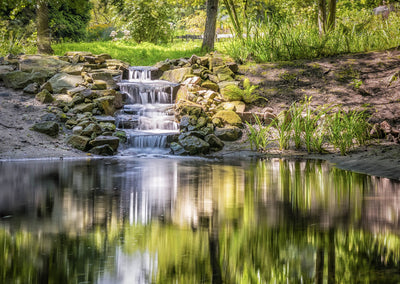The Western Conifer Seed Bug (Leptoglossus occidentalis)

What Exactly is a True Bug?
October, at least in the Okanagan, signals the appearance and movement of the Western Conifer Seed Bug (Leptoglossus occidentalis). They seem to come out of nowhere and cover practically any surface making a home seem inundated. If you watch the aerial movement of this bug, it is rather comedic because they fly around in zig-zags as if they had one too many beers. Unlike many insects, this critter is considered to be a true bug meaning it has a mouthpart (proboscis) specially designed for sucking mostly plant fluids. The proboscis looks a lot like a long, non-retractable beak that works much like a straw. The proboscis is meant to pierce substances like plant tissues and then suck the juices out. Other insects like honeybees and butterflies have a retractable proboscis - it rolls up. Other true bugs include leafhoppers, cicadas, stink bugs, water bugs, bed bugs, and aphids. True bugs belong in their own group or order called Hemiptera. Every bug in this order goes through what is called incomplete metamorphosis which means they go through a simple life cycle (egg to nymph to adult). The young hatch as nymphs (immature versions of the adult) straight from the egg. Of the millions of insect species we know of on Earth, 80,000 are true bugs and they can inhabit almost anywhere on the planet whether it be on land or in water. True bugs vary in size from tiny (~ 1 mm - like bedbugs) to large (15 cm or 6 inches - like the giant water bug).
The Western Conifer Seed Bug
Also called the pine seed bug of the leaf-footed bug group, this critter is a common household invader during the fall, winter, and spring. As the group name applies, leaf-footed refers to flat, leaf-like back leg expansions. The bug itself is really about 1 inch long with antennae that span almost the length of the body. The body itself is quite pretty in an abstract sort of way with crisscrossing brownish patterns all over the place. Sometimes you may find a white, zigzag stripe across the middle of the back. When it flies, you will often see bright, yellowish-orange areas appear on its back. Of note, these bugs do not bite, sting, feed, or carry diseases that can affect people, wildlife pets, or homes. They can't reproduce inside your home because egg-laying and development are restricted to the host plants they use in summer. What they can do is give off a pungent order when threatened - hey, it's their only defense strategy! They also can make a loud buzzing sound when flying; this can be startling to predators and humans alike.
You'll find the nymphs and adults spending their leisurely summer on host plants such as white, red, Scotch, Mugo and Austrian pines, white spruce, hemlock, and Douglas-fir trees where they pierce the scales of green cones and twigs to retrieve the tasty sap or seed pulp within. These host plants are often found in landscaped yards and nearby forests. Usually, the sap-feeding does little damage to the trees but damaged cones may lead to failed seed development. In the fall, like many insects, the western conifer seed bug starts to fly towards and find a way into south-facing, warmer places like garages, businesses, and homes. Once the warmth of the day drops in temperature at sunset, these bugs crawl into any void to keep warm. In spring, the bugs move away from their winter hiding quarters and into nearby host trees where they feed on the developing conifer seeds and early flowers. Females lay eggs in rows along with the needles of host trees. The eggs hatch into orangy-reddish-brown-colored nymphs in about 10 days. After passing through five stages the nymphs reach adulthood by late August. The adults feed on ripening conifer seeds until they need to seek winter shelter again.
If you feel overwhelmed by these invaders, you can control them to some extent by sealing points of entry - seal or screen cracks and gaps,
frames, and soffits in the outside of your home, shed, greenhouse, shop,
or business. Spraying the inside of your house is of little benefit, not to mention spraying any kind of insect killer in a home could have negative consequences for anything living in it. Since the bugs are harmless, they can easily be removed by hand to be placed outside.
Also called the pine seed bug of the leaf-footed bug group, the Western Conifer Seed Bug is a common household invader during the fall, winter, and spring. As the group name applies, leaf-footed refers to flat, leaf-like back leg expansions. The bug itself is about 1 inch long, with antennae that span almost the length of the body. The body is covered with crisscrossing brownish patterns that look abstract and, in a way, beautiful. Sometimes you may find a white zigzag stripe across the middle of the back. When it flies, you will often see bright Yellowish-orange areas appear on its back. Of note, these bugs do not bite, sting, feed, or carry diseases that can affect people, wildlife, pets, or homes. They can't reproduce inside your home because egg-laying and development are restricted to the host plants they use in summer. What they can do is give off a pungent order when threatened - hey, it's their only defence strategy! They also can make a loud buzzing sound when flying; this can be startling to predators and humans alike.
You'll find the nymphs and adults spending their leisurely summer on host plants such as white, red, Scotch, Mugo and Austrian pines, white spruce, hemlock, and Douglas-fir trees, where they pierce the scales of green cones and twigs to retrieve the tasty sap or seed pulp within. These host plants are often found in landscaped yards and nearby forests. Usually, sap-feeding does minor damage to the trees, but damaged cones may lead to failed seed development. In the fall, like many insects, the western conifer seed bug starts to fly towards and find a way into south-facing, warmer places like garages, businesses, and homes. Once the warmth of the day drops in temperature at sunset, these bugs crawl into any void to keep warm. In spring, the bugs move away from their winter hiding quarters and into nearby host trees, where they feed on the developing conifer seeds and early flowers. Females lay eggs in rows along with the needles of host trees. The eggs hatch into orangy-reddish-brown-coloured nymphs in about ten days. After passing through five stages, the nymphs reach adulthood by late August. The adults feed on ripening conifer seeds until they need to seek winter shelter again.
If you feel overwhelmed by these invaders, you can control them to some extent by sealing points of entry - seal or screen cracks and gaps, frames, and soffits in the outside of your home, shed, greenhouse, shop, or business. Spraying the inside of your house is of little benefit, not to mention spraying any insect killer in a home could have negative consequences for anything living in it. Since the bugs are harmless, they can easily be captured and placed outside.
![]() If your property has become a target for pests or diseases, give us a call. KHS Landscape Professionals contracts out Integrated Pest Management (IPM) services to address all kinds of property afflictions. As a forward thinking company with a strong connection to nature, KHS focuses on using organic chemicals whenever possible and educates clients about alternative ways to understand and combat a pest or disease-related issue.
If your property has become a target for pests or diseases, give us a call. KHS Landscape Professionals contracts out Integrated Pest Management (IPM) services to address all kinds of property afflictions. As a forward thinking company with a strong connection to nature, KHS focuses on using organic chemicals whenever possible and educates clients about alternative ways to understand and combat a pest or disease-related issue.






